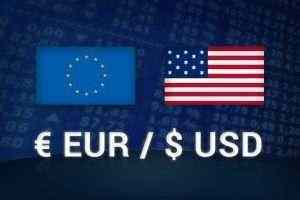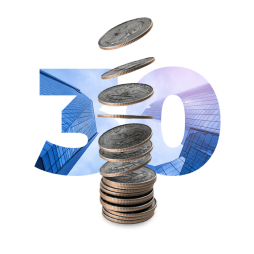

According to data from the NYSE, trading volume grew by about 164% between 2005 and 2009 for which high-frequency trading might be accounted. The high-frequency strategy was first made popular by Renaissance Technologies who use both HFT and quantitative aspects in their trading. Many high-frequency firms are market makers and provide liquidity to the market which lowers volatility and helps narrow bid–offer spreads, making trading and investing cheaper for other market participants. In 2017, Aldridge and Krawciw estimated that in 2016 HFT on average initiated 10–40% of trading volume in equities, and 10–15% of volume in foreign exchange and commodities. Intraday, however, the proportion of HFT may vary from 0% to 100% of short-term trading volume.
HFT firms are looking for fertile ground to plant their best strategy around the world where competition is less fierce. Such performance is achieved with the use of hardware acceleration or even full-hardware processing of incoming market data, in association with high-speed communication protocols, such as 10 Gigabit Ethernet or PCI Express. More specifically, some companies provide full-hardware appliances based on FPGA technology to obtain sub-microsecond end-to-end market data processing. Risk controls were poorer in high-frequency trading, because of competitive time pressure to execute trades without the more extensive safety checks normally used in slower trades. The brief but dramatic stock market crash of May 6, 2010 was initially thought to have been caused by high-frequency trading. The Dow Jones Industrial Average plunged to its largest intraday point loss, but not percentage loss, in history, only to recover much of those losses within minutes.
The slowdown promises to impede HST ability «often cancel dozens of orders for every trade they make». In October 2013, regulators fined Knight Capital $12 million for the trading malfunction that led to its collapse. Knight was found to have violated the SEC’s market access rule, in effect since 2010 to prevent such mistakes. Regulators stated the HFT firm ignored dozens of error messages before its computers sent millions of unintended orders to the market.

Automated systems can identify company names, keywords and sometimes semantics to make news-based trades before human traders can process the news. Index arbitrage exploits index tracker funds which are bound to buy and sell large volumes of securities in proportion to their changing weights in indices. If a HFT firm is able to access and process information which predicts these changes before the tracker funds do so, they can buy up securities in advance of the trackers and sell them on to them at a profit. The firms operating in the HFT industry have earned a bad name for themselves because of their secretive ways of doing things. However, these firms are slowly shedding this image and coming out in the open. The high frequency trading has spread in all prominent markets and is a big part of it.
High-frequency arbitrage
You could also try out crypto social trading, which gives professionals the chance to manage your money while you still have a reasonable level of control over it. In the financial markets, retail investors trade because they have confidence in the integrity of the institutions and the stock exchange boards. Contrary, an HFT system can perform hundreds and thousands of trades per second. That is why institutions and hedge funds use Algo trading systems to make trades because it’s humanly not possible doing it manually. In June 2014, high-frequency trading firm Citadel LLC was fined $800,000 for violations that included quote stuffing.

The rapid-fire computer-based HFT developed gradually since 1983 after NASDAQ introduced a purely electronic form of trading. At the turn of the 21st century, HFT trades had an execution time of several seconds, whereas by 2010 this had decreased to milli- and even microseconds. Until recently, high-frequency trading was a little-known topic outside the financial sector, with an article published by the New York Times in July 2009 being one of the first to bring the subject to the public’s attention. A high-speed data feed transmits data such as price quotes and yields in real-time without delays, and is used in high-frequency trading. There are many strategies employed by the propriety traders to make money for their firms; some are quite commonplace, some are more controversial. The most common and biggest form of HFT firm is the independent proprietary firm.
The fastest technologies give traders an advantage over other «slower» investors as they can change prices of the securities they trade. In October 2014, Athena Capital Research LLC was fined $1 million on price manipulation charges. The high-speed trading firm used $40 million to rig prices of thousands of stocks, including eBay, according to U.S. regulators.
Global Macro Strategy
These strategies appear intimately related to the entry of new electronic venues. Academic study of Chi-X’s entry into the European equity market reveals that its launch coincided with a large HFT that made markets using both the incumbent market, NYSE-Euronext, and the new market, Chi-X. The study shows that the new market provided ideal conditions for HFT market-making, low fees (i.e., rebates for quotes that led to execution) and a fast system, yet the HFT was equally active in the incumbent market to offload nonzero positions. New market entry and HFT arrival are further shown to coincide with a significant improvement in liquidity supply. These firms trade from both sides (i.e., they place orders to buy as well as sell using limit orders that are above the current marketplace, in the case of selling, and slightly below the current market price, in the case of buying). For arbitrage traders, this creates a small window of opportunity to buy and sell shares that will be added to, or removed from, index funds.
When Temitope is not writing, he takes his time to learn new things and also loves to visit new places. This is because the whole trade usually happens almost immediately, and there is no demand for high-market liquidity. Moreso, it also allows the users to exploit price changes before they fully appear in the order book. This book covers the essential aspects of HFTs and their importance from a business point of view that sets the foundation for developing trading systems. You’ll also get a brief idea about the post-trade analysis processes, such as important performance metrics and trading evaluations.

All portfolio-allocation decisions are made by computerized quantitative models. The success of high-frequency trading strategies is largely driven by their ability to simultaneously process large volumes of information, something ordinary human traders cannot do. Many practical algorithms are in fact quite simple arbitrages which could previously have been performed at lower frequency—competition tends to occur through who can execute them the fastest rather than who can create new breakthrough algorithms. The firms engaged in HFT often face risks related to software anomaly, dynamic market conditions, as well as regulations, and compliance. One of the glaring instances was a fiasco that took place on August 1, 2012, which brought Knight Capital Group close to bankruptcy.
How HFT Impacts the Stock Market?
As of 2020, it is estimated that these firms account for around 50% of equities trading volume in the U.S. Even the liquidity HFT creates only lasts a few seconds, so it’s often dubbed ‘ghost liquidity’ as it has no real benefit to most market participants, yet large firms receive fees from exchanges for the service. High-frequency trading can improve market conditions since it usually involves many trades. It also provides a constant flow of liquidity in the market, which helps to maintain tight ask and bid prices.
What is High-Frequency Trading?
The authors of this book also reveal how to build IT infrastructure for creating high-frequency trading algorithms and obtaining arbitrage from financial markets. The book will help you understand which markets are suitable for HFT, algorithmic strategies high-frequency traders use, risks, and upcoming technology advancements in High-Frequency Trading. Some well-known HFT strategies include index arbitrage trading, volatility trading, news-based, global macro strategy, etc.
“TNS keeps an eye on what HFT firms are doing, and we try to find a way to make that available to firms that aren’t at the tip of the spear in terms of latency, cost and sensitivity,” Mezger explained. Quote stuffing is a form of abusive market manipulation that has been employed by high-frequency traders and is subject to disciplinary action. It involves quickly entering and withdrawing a large number of orders in an attempt to flood the market creating confusion in the market and trading opportunities for high-frequency traders. Proprietary trading refers to a financial firm or bank that invests for direct market gain rather than earning commissions and fees by trading on the behalf of clients. These include white papers, government data, original reporting, and interviews with industry experts. We also reference original research from other reputable publishers where appropriate.
HFTs provide an essential playground for trading high turnover orders that churn out many profits better than a human could. High-Frequency Trading is a process wherein computers are programmed to trade hundreds and thousands of times a second to make little profits over time. HFT strategies have also been broadened out of equities to more asset classes including foreign exchange , ETFs and from new corners of the market such as commodities trading advisors, she added. One such large liquidity provider, who spoke anonymously to IFLR, bristled at the idea that HFT firms in fact rob the market of the vital liquidity needed for price discovery and markets optimisation. Bauguess said claims that retail investors are harmed by HFT remains unclear, but that an SEC plan to study market structure effects, the Transaction Fee Pilot, was approved but then scuttled after being challenged in court. The impetus for efforts to modernise the securities markets was detailed in an opinion to the SEC’s approval vote for Regulation National Market System .
This is not to say that retail traders cannot get involved in any form of algorithmic trade—there are many automated trading strategies that day traders can get for a price. Some automated trading bots are also created to operate closely to how a proper HFT trading strategy works. In milliseconds, computers can determine market patterns and carry out automated, programmed instructions to buy and sell instruments. As trades get executed faster, and trade volumes are significantly higher, HFT increases competition in the market. With increased liquidity, bid-ask spreads decline, leading to more efficient markets. High frequency trading uses algorithms to analyse trading data and execute trades in fractions of a second.